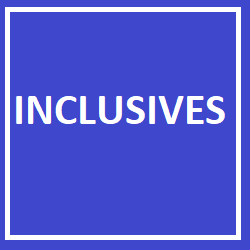| Racial and Ethnic Inclusivity: Language exams also emphasize racial and ethnic inclusivity. This involves recognizing and respecting the diversity of racial and ethnic backgrounds, using inclusive terminology, avoiding stereotypes, and acknowledging the contributions and experiences of different racial and ethnic groups.
Disability-Inclusive Language: Language proficiency exams like TOEFL and IELTS promote the use of disability-inclusive language. This means using person-first language, which emphasizes the person rather than their disability, and avoiding derogatory or stigmatizing terms.
Inclusive Language in Professional Settings: Inclusive language is also important in professional settings, which language exams often assess. It involves avoiding gendered job titles, using inclusive greetings, and recognizing diverse perspectives and contributions in the workplace.
Sample Sentences :
Gender-Inclusive Language:
1- Instead of saying, “Every student should bring his textbook,” you can say, “Every student should bring their textbook.”
2- Rather than using “he” or “she” in a sentence, you can use a gender-neutral pronoun like “they.” For example, “If someone wants to join the club, they can sign up at the front desk.”
Racial and Ethnic Inclusivity:
1- Instead of using stereotypical descriptions, focus on the individual’s qualities or achievements. For instance, say, “She is a talented musician” rather than “She is a talented Asian musician.”
2- When discussing historical events or cultural practices, make sure to provide a balanced and inclusive representation of different racial and ethnic groups. For example, “The contributions of African, Asian, and Native American communities are significant in American history.”
Disability-Inclusive Language:
1- Instead of using terms like “disabled person” or “the disabled,” use person-first language. For instance, say, “He is a person with a disability” or “She has a visual impairment.”
2- Avoid using derogatory or offensive terms related to disabilities and focus on promoting respect and dignity. For example, say, “She uses a wheelchair for mobility” instead of “She is confined to a wheelchair.”
Inclusive Language in Professional Settings:
1- Instead of using gendered job titles like “salesman” or “stewardess,” use gender-neutral alternatives like “salesperson” or “flight attendant.”
2-When addressing a group, use inclusive greetings such as “Good morning, everyone” instead of “Good morning, guys” or “Good morning, ladies and gentlemen.” |
